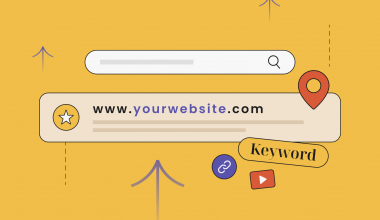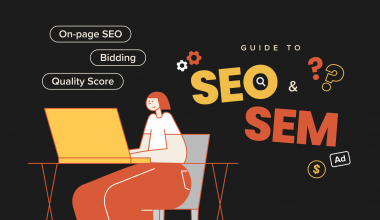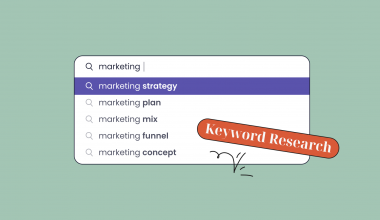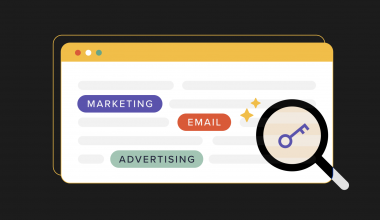When it comes to SEO, how would you start with optimizing your website? What strategy would you execute?
To make everyone’s life easier, we have simplified the steps of SEO. First, you should research your target keywords, and then analyze them. Once you have a list of keywords, start creating a Link Building Strategy.
Not sure how to do that? Read on to find out.
What is Link Building?
Link Building is a part of the SEO strategy that digital marketers and SEO experts do to optimize their websites by getting links to link back to their own. You could think of links as votes. By getting more votes, the search engine will be convinced that your website has authority in your industry.
Before that, link building used to focus more on quantity than quality. Now, however, heavier emphasis is put on the quality of the links, which search engines determine by seeing how relevant the links are to the content of the web pages. In simpler terms, the more quality links you have pointing back to your website, the more authoritative your website will be to search engines.
3 Types of Links
Now, before planning your Link Building Strategy, it is essential to learn the different types of links. Each of them serves a different purpose in various stages of your strategy.
1. Internal links
As the name suggests, internal links are links that are located inside your website, pointing from one page to another. This is the first type of link you should have figured out even before you start designing your website.
At the stage of wireframing and site map structuring, you should have a thorough plan on how each web page will lead to another, and how your user journey will flow from your homepage. From there, you will then insert internal links to link those pages to one another on your website.
Internal links could also be differentiated into two kinds:
i) Navigational links
These links help to navigate and guide users to search for what they need. They are typically located at the top and bottom of every web page.
ii) Contextual links
These links appear within your content and point to other related pages. They help search engines to find out which contents are related and to measure their value. If a web page has a lot of contextual links pointing back, search engines will take this as a signal that the page has high-quality content.
For example, if you want an overview of SEO, we could include a contextual link to link back to our other blog, A Helpful Beginner Guide to SEO & SEM.
2. Outbound links
They are links from your website pointing to other websites. Outbound links are used to link readers to more relatable content or act as a reference for the statement you’ve written. These are also called ‘authority links’, as they are often what help back you up for your statements and information when you link to more authoritative sources.
3. Inbound links
Also known as External links and Backlinks, these are links that come from other websites to your own. These are what we mentioned as ‘votes’ before. Similar to outbound links, inbound links are what other websites refer to as they backlink to your website. It simply means that they find your website valuable and useful, which further signals search engines about your authoritativeness.
How To Create A Successful Link Building Strategy?
1. Analyze your website
Before you start planning your Link Building Strategy, it is important to analyze and check your website’s SEO performance. You should first determine which part of your website does well and which doesn’t, what is lacking and how you should improve it.
Ultimately, all of these are crucial assets for your website to grow and improve. It’s not just about the things you’re lacking, it’s about knowing what you should incorporate in your Link Building Strategy and which part to focus more to get better SEO results.
2. Define your audience
The next step is to understand your audience, visitors and readers. Start by going over to your Google Analytics and checking on the ‘Audience’ section to determine your specific audience. Here, you can gather all the info you want, from behaviours and interests to demographics and the type of device they normally use.
This is where you’ll get a sense of your target audience, what interests them and how it could be linked to your products or services.
3. Audit existing content and write new ones
Now that you know exactly what your audience is interested in, it’s time to audit your existing content on the website. Periodically updating your content is a no-brainer way to optimise your website’s search performance. According to authorityhacker, updating old content could potentially lead to a higher ranking as they have both the ‘age’ and ‘freshness’.
Other than editing and updating existing content, you should also produce new and relevant content at the same time. You could start by targeting the keywords that are at the top of the funnel (TOFU) as this is normally the stage where your audience wants to learn more. Create content that answers their questions, and provides them with solutions and advice to build a trusty relationship with them. Ideally, this content should be high-quality enough that other websites would be interested in linking back to yours.
4. Monitor Readability & User Experience
Not only should you amend your content, but you should also inspect your overall website experience. Start by monitoring your content’s readability. If your audience is the general public, you should aim to write at the comprehension level of a grade 5 student. Jargons or technical terms should be given extra explanations to ensure that every reader understands your text.
The next thing to monitor is the user experience of your website. Some of the questions you should be asking when you’re doing this exercise are:
- How are the internal links between your web pages linked to each other?
- Are they performed in a structural format that won’t complicate the user’s journey?
- Will the users be able to find what they want easily?
5. Make a list of sites that would appeal to your audience
After you have examined your website, it’s time to hit the search engine to look up the sites that will potentially appeal to your audience. You should look out for sites that:
- Are align with your business, content and target audience
- Have high authority
- Have high-quality content
- Require a filter process to guest post
More than often, brand owners want to be quick when building links and would succumb by participating in faulty link schemes or buying links to manipulate the page rank. These actions will violate search engines’ guidelines and negatively impact your website. You’ll have to remember that SEO and Link Building Strategy are long-term strategies that will be very fruitful only when done right.
6. Reach out and start guest blogging
Once you have a list of sites, you could start reaching out to them and build a professional relationship. Of course, it is always crucial to check on their requirements and ways of contact if that’s stated on their website. Be sure to adhere to those requirements.
Ultimately, you should also browse around the sites to get a gist of the kind of content they publish. At the same time, think of any additional or new perspectives you could add to the content that is also relevant to your industry and business. Create quality articles and start pitching to them.
7. Link your social media to your website
One other tactic to build quality links is to share your website on your social media platforms. All Facebook, Twitter and LinkedIn have the option to link your website’s URL to your posts. So, write an enticing caption and share it on these platforms. You’ll never know if there’s a new audience out there that’s interested in your brand.
The actions of liking, commenting and sharing also indicate high authority to search engines. This means that online users are finding your content relevant and useful, so they are worth sharing around.
In a nutshell, SEO strategy takes a lot of effort, time and dedication. But when done right, you will get to increase your brand awareness, web traffic as well as sales conversion. If you’re still unsure how to start it, one of the ways is to get in touch with SEO experts.










